Your Cart is Empty
Get Up To 35% OFF & Free Delivery
Get Up To 35% OFF & Free Delivery
Get Up To 35% OFF & Free Delivery
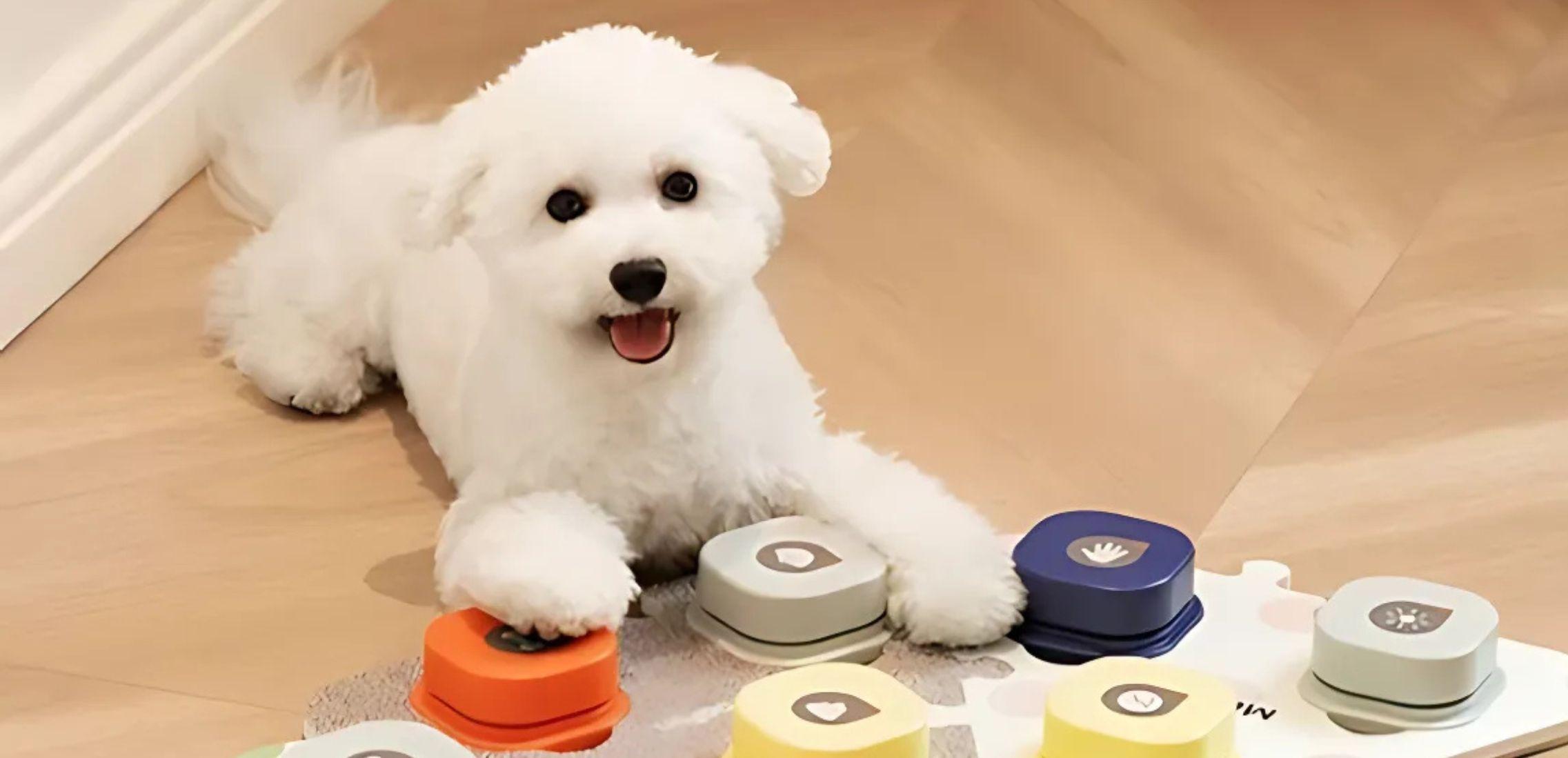
Ever wondered what your dog would say to you if they were able to talk? Wish that you could have a clearer idea of what our canine companions are trying to tell us from day to day? Well, this dream can now become a bit more of a reality!
Speaking with push buttons has become an increasingly popular tool for dog owners, having gained traction and attention through adorable online videos, these buttons say words or phrases when pushed by your dog, and through regular training your pup can be taught how to use them to communicate with you.
These buttons can be used by your dog to not only express what they want or need, but also help give you an idea of how they are feeling. More extensive buttons can even help your dog tell you if they are happy, sad, angry, anxious, or in pain.
In this blog we are going to take a closer look at how to train dogs to use buttons, how this tool can help them to communicate with us, and how to go about putting a training programme in place.
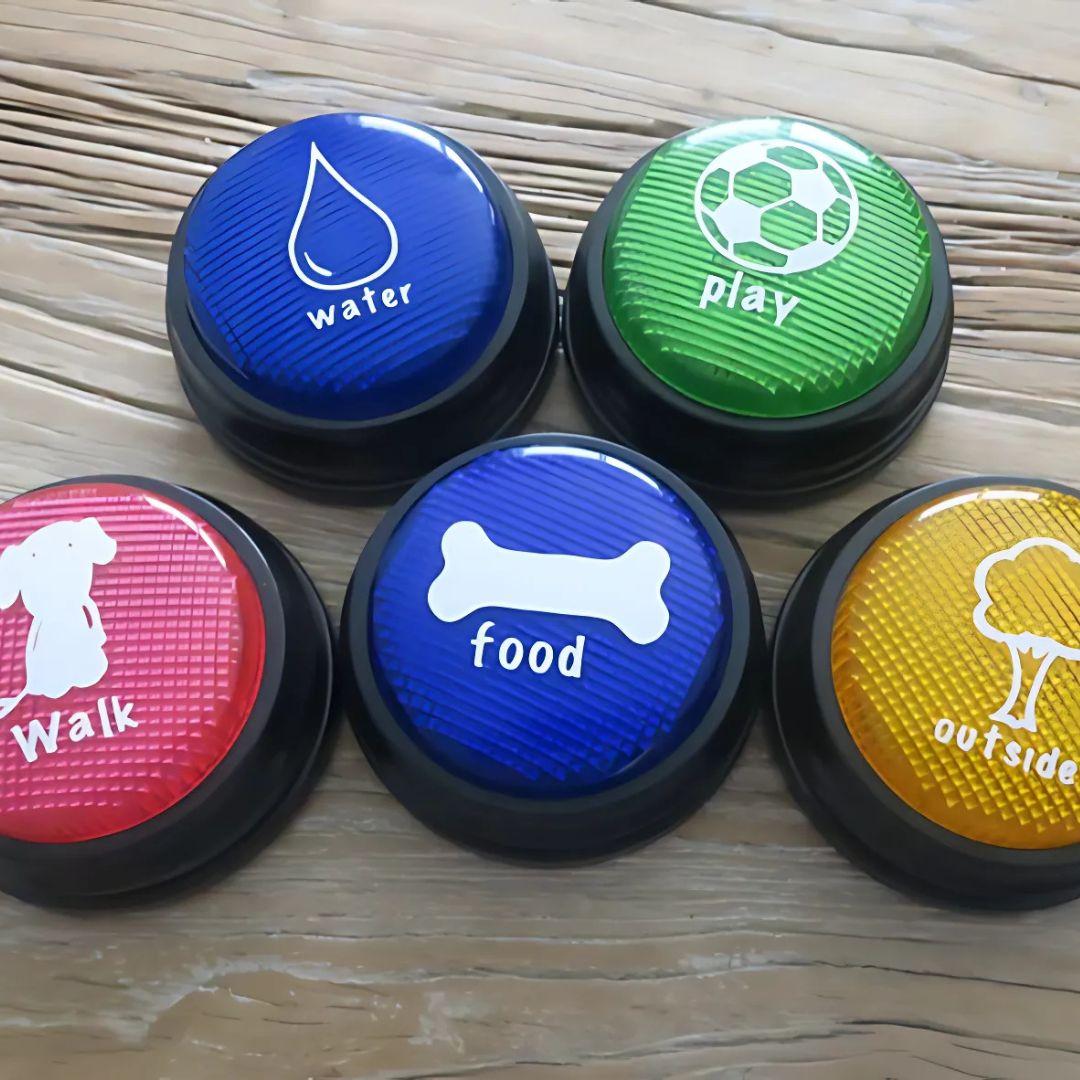
Push buttons operate by allowing you to electronically record sounds or words in your own voice, which your dog can then learn to press in order to communicate with you. The buttons could be words that you use regularly with your dog, as well as adding in a few new phrases that you want As an example, you may want to add in daily words like ‘walk’, ‘food’, ‘play’, and so on, and as your dog starts to get the hang of things, you can start to increase the number of buttons, perhaps with recording that focus on your dog’s emotional state, questions or words about their environment and surroundings.
Starting with familiar commands will help your dog get used to the idea of the buttons, as these are words that they hear everyday and already know what they mean. The great thing about teaching your dog to talk with buttons is that there are no limits to what you can include, allowing your pup to broaden their understanding and level of communication.
It is always better to start off small and then grow the number of buttons as your dog’s ability progresses. Trying to add too many new words or phrases too soon can just confuse your dog and hinder their progress.
It is recommended to use buttons that come attached to mats to help keep them in place, as individual buttons can be harder for your dog to maneuver and may slip around. You can get buttons that come with pre-recorded words, however you may choose to record your own so that your dog has a familiar voice speaking back to them through the button.
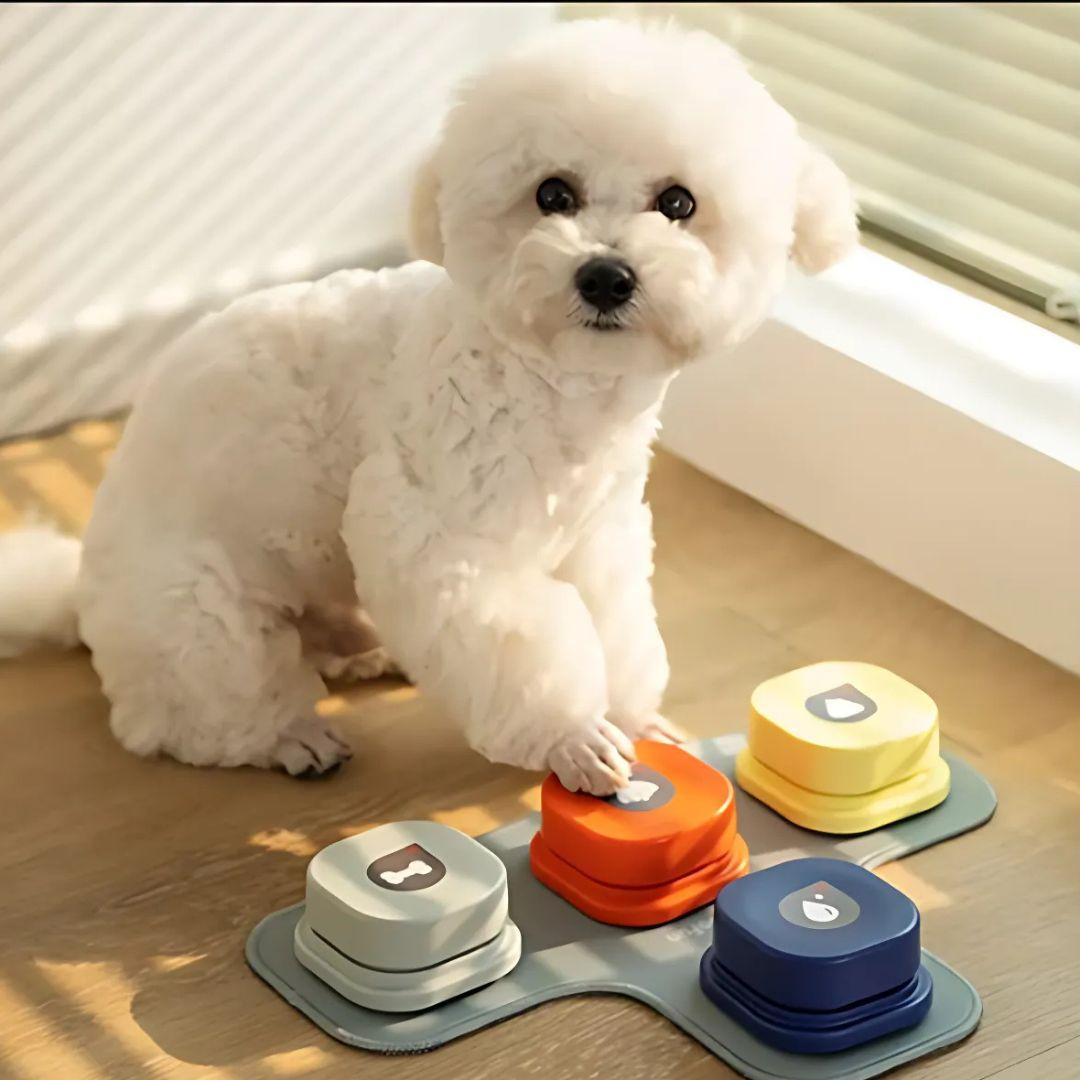
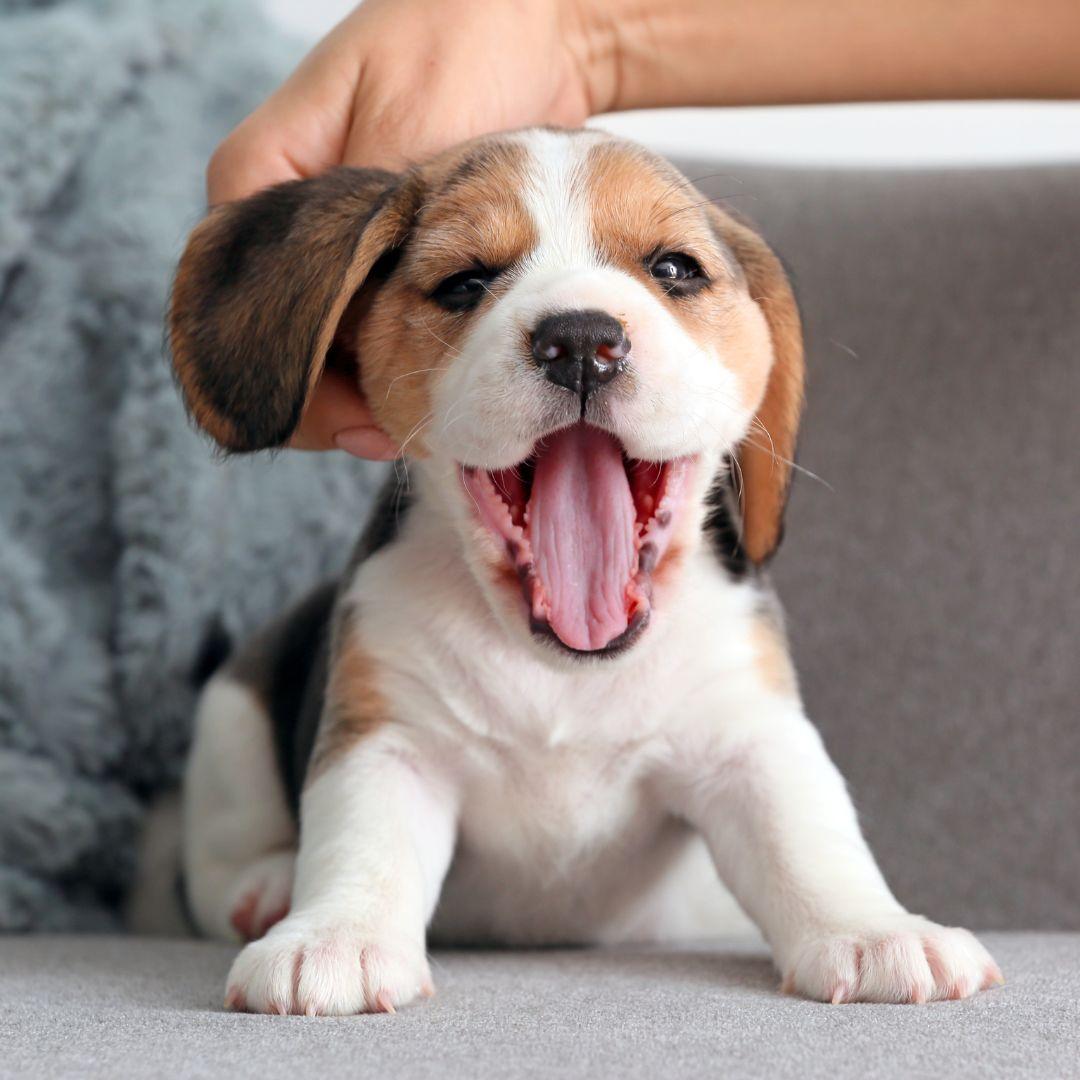
Teaching your dog to ‘talk’ with buttons is a fairly new phenomenon in the world of pup parenthood, and so both your and your fur baby will be learning alongside each other.
Here are some of the steps your can take to help get your dog used to their new push buttons, and how to encourage progress through regular training practices:
The golden rule for any form of dog training is to keep things positive and let your pup know that they are doing a good job. Dogs are eager to please and want to be obedient, so reassurance and reinforcing their desired behavior with plenty of fuss and treats will keep them eager to learn more.
We recommend choosing commands words that you have already incorporated into your dog’s daily routine. These may be as simple as ‘walkies’, ‘dinner’ or ‘cuddle’, or you may have more unique or specific words or phrases that you use around the home.
The most important thing at first is to choose words that your dog will recognize and which they already have an affinity with. Recording these in your own voice adds a touch of familiarity to the buttons and can help reduce some of the anxiety they may have around using them.


Find a designated spot for the buttons which is easier for your dog to get to - you may want to set them up in a separate room, or keep them in a specific section of a larger room like the living room or kitchen.
It is a good idea to keep them out of the way of heavy foot traffic, as this can become overwhelming for your dog and lead to more regular accidental button pushing. If you have young children they may naturally want to go and explore the buttons, and so keeping them in a space which is accessible just for your dog may be beneficial in the early stages of training.
Too much too fast can be confusing for your pup, and so it is worth introducing them to a singular button at a time so that they become familiar with the look, feel and sound.
Try starting with a simple word that they hear everyday, such as ‘dinner’ or ‘toy’, as they will already know what this sound means and will come to learn that they can give this command by pressing the button.
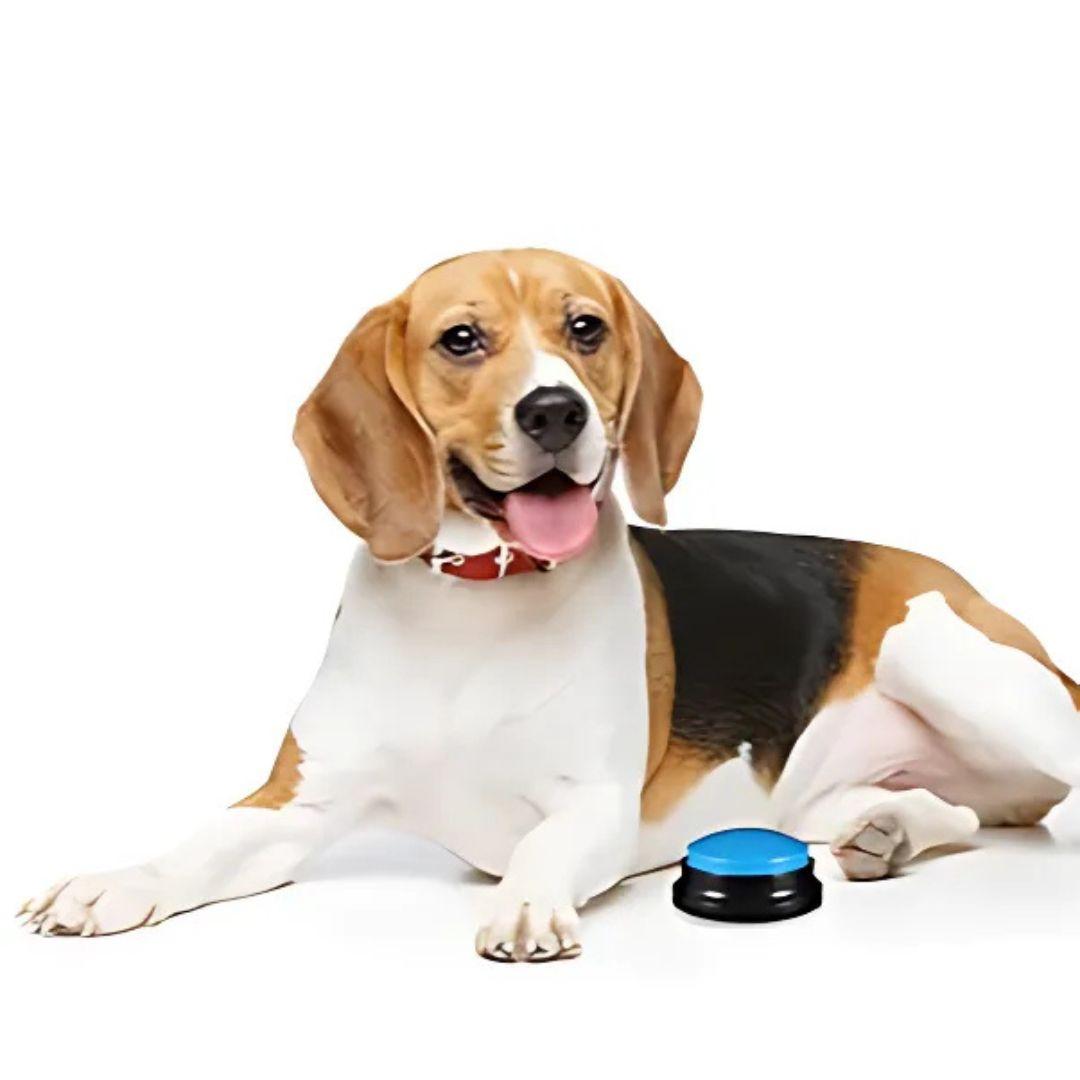
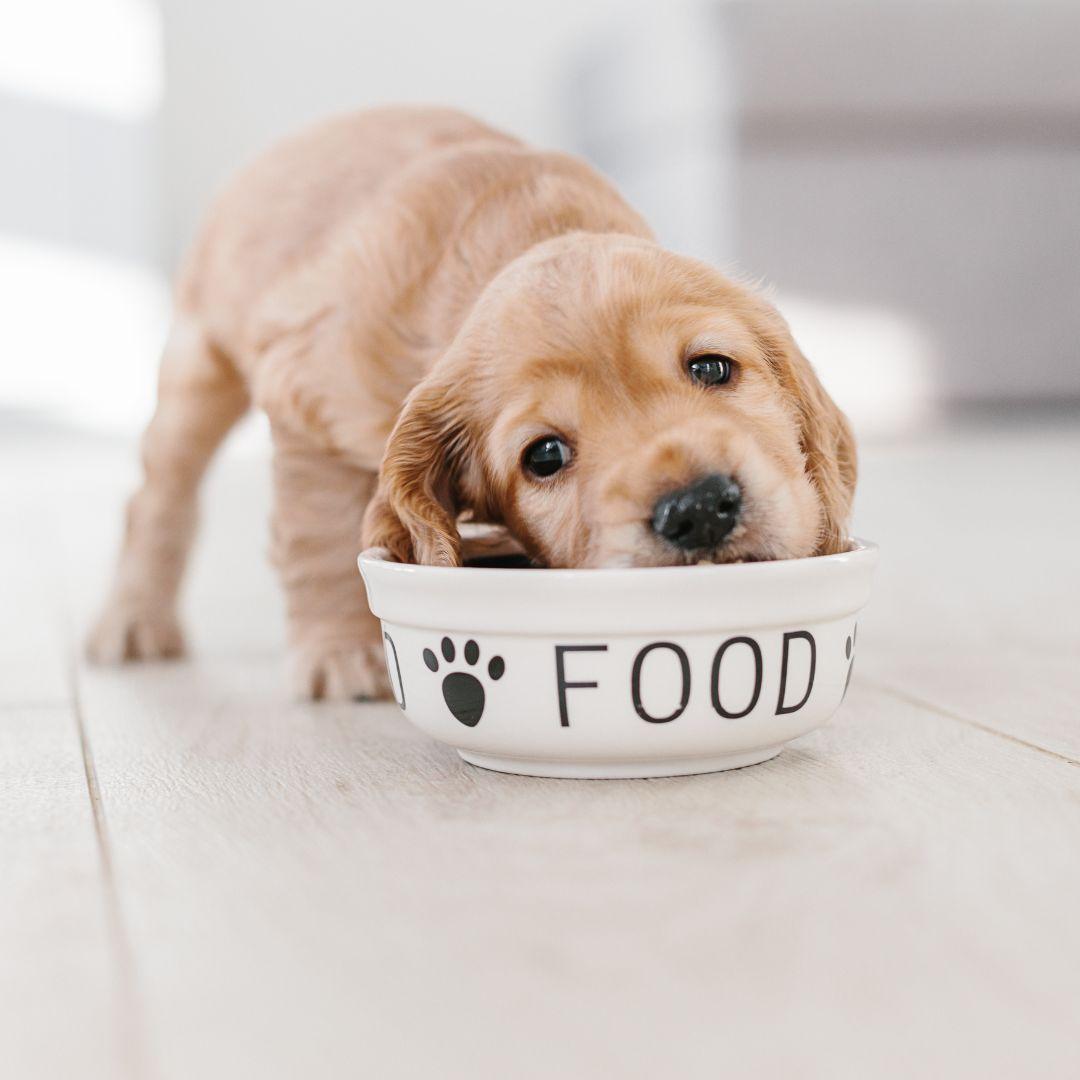
The next step is to get your dog to associate the button sound and act of pushing it with a specific event. You can encourage this by modeling the action for your dog. For example, you could try giving your dog some food or a treat, and when they take it you can press the ‘food’ or ‘treat’ button. Likewise, when you are getting them ready for a walk, you could clip onto their leash, and then bring them over to the buttons and press ‘walk’ before you head out.
The aim is to include the buttons in your dog’s day to day routine to consistently show your pup that they can be used to tell you what they want. The more you make the buttons a familiar presence, the more it encourages your pup to start exploring and interacting with them as a lol of communication.
Using the buttons regularly shows your dog that if one is pressed, then a subsequent action occurs. Dogs thrive through repetitive training, and so the more often your practice with the buttons, the more likely your dog is to learn.
This will not be an overnight process - dogs, as we know, do not speak like humans do, and we wouldn’t expect a human to be able to speak a whole new language overnight!
When it comes to animal training, while you can try and follow a structure with the best of intentions, there will always be new and unforeseen things that crop up with each individual pup.
Here are a few tips on things to look out for when teaching your dog to use push buttons:
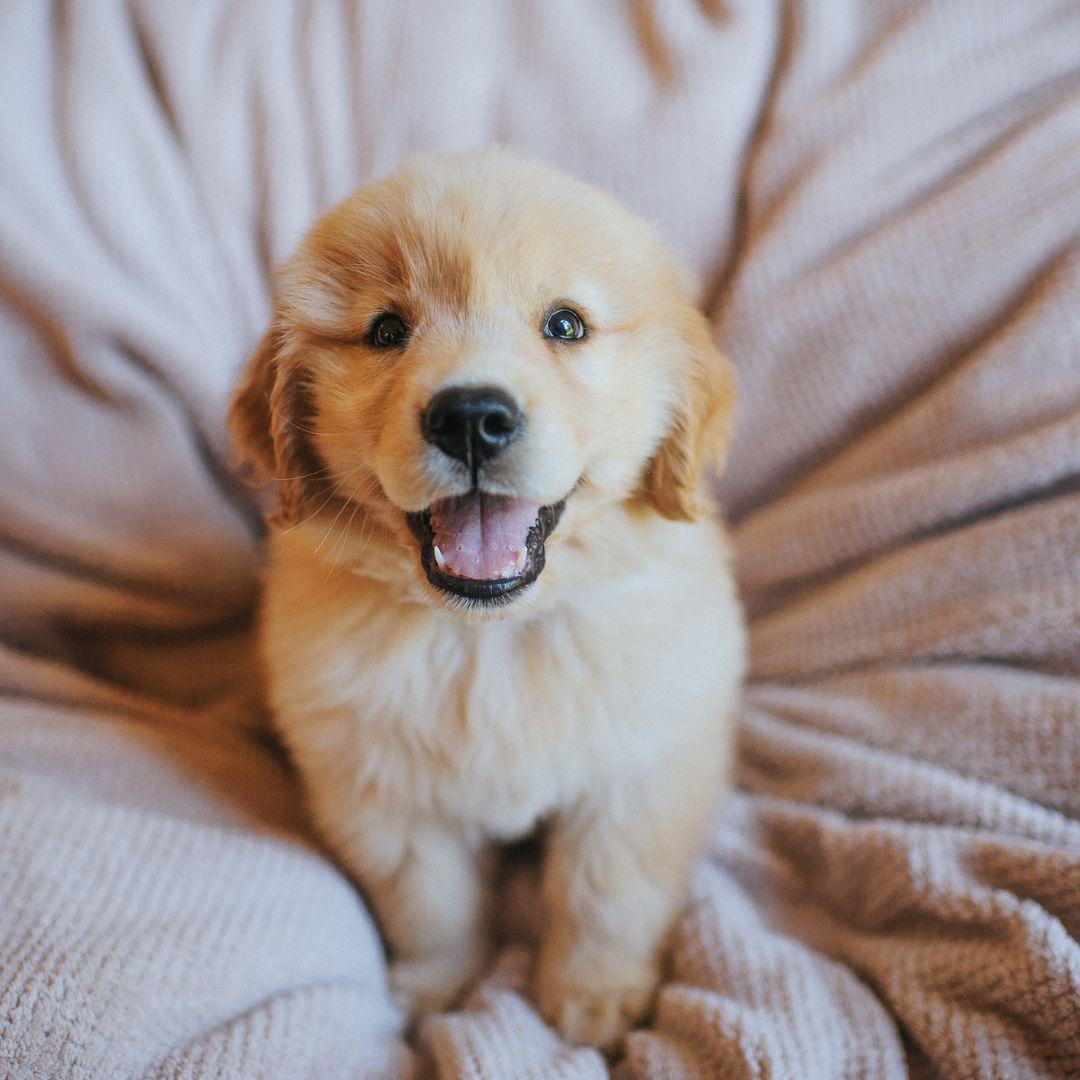

When your dog becomes more confident and begins to realize they can ask for what they want at the push of a button, they may get a little cheeky and start to press the button excessively until they get what they want.
It is important to discourage this behavior. Just because your dog asks for a treat or playtime does not mean it is always feasible at the time, and so they need to know that just because they can ask for it, it doesn’t mean they will always get it.
It is important to praise your dog regularly during their training to keep them interested and eager to continue with desired behaviors. Whether they just learnt to push a new button or are displaying that they are generally receptive to new learning, keep some good treats on hand to give them incentive to keep going.
If training sessions are too long, your dog will become bored and tired, and subsequently will become less receptive. Lengthy sessions where you try to cram too much information into a short space of time will just overwhelm your dog, and can actually hinder their progress rather than help it.
Be sure to keep training sessions short, fun and engaging, with a focus on positive reinforcement - this will maintain your dog’s interest and solidify their learning, giving them a firm foundation from which they can fly!
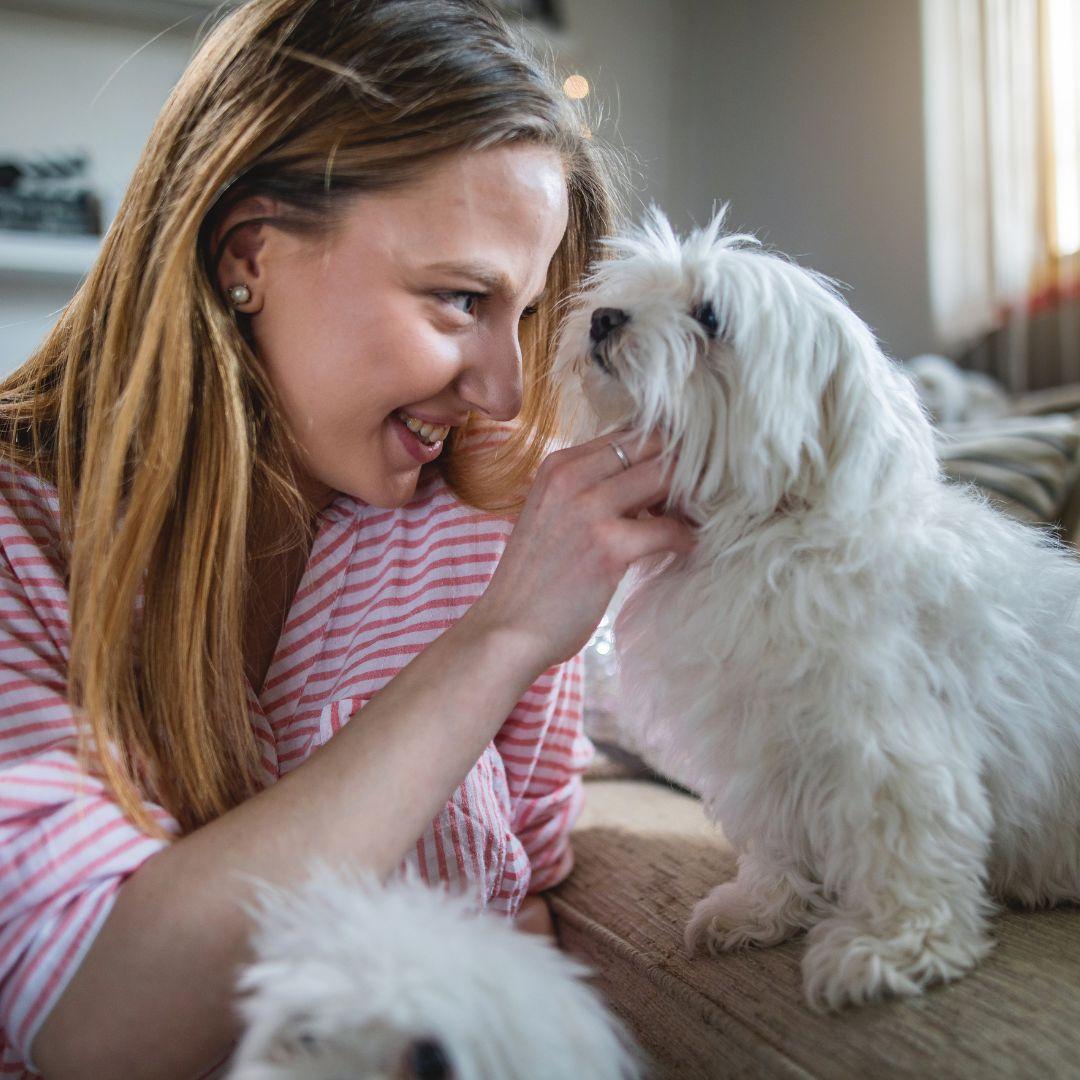
Teaching your dog to talk through the use of push buttons is not only extremely charming and adorable; it can strengthen the bond and communication you have with your canine companion. From simple daily activities to greater insight into your dog’s physical and emotional wellbeing, push buttons can be a super beneficial training tool to bring into your home.
Empowering your dog to take charge of their own needs and feel like they have a direct line of communication to you to get what they need can help increase feelings of safety and security, as well as breed a greater level of closeness between you and your pet.
See How Dog Owners Are Using These Leak-Free Potty Pads to Keep Their Homes Clean and Pups Happy
4.7 ⭐⭐⭐⭐⭐
Over 100,000 Dog Owners Saved Money With Potty Buddy™
The washable pee pads that absorb anything your dog throws at them, while keeping your floors and furniture stain-free.
✅ Super Absorbent and Leak-Proof
✅ Great for Potty Training
✅ Ideal for Puppies and Older Dogs
✅ Washable and Reusable For Years
✅ Save over $400/year by not buying disposables
-60 Day Money Back Guarantee-
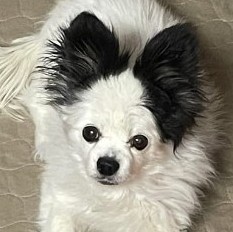
⭐⭐⭐⭐⭐
-Diana D.
These pads are a life saver for my kitchen floor and bedroom carpet! Just ordered 2 more!




Check Out Our Most Popular Content